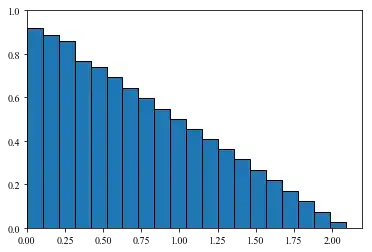I was running a computer simulation to get the distribution of smallest angle between 3 random lines (in $2$D) lying on the unit circle (i.e. lines between the center and the circumference). Explicitly, I draw 3 numbers uniformly in $[0,2\pi]$. I define $v_i = (\cos{\theta_i},\sin{\theta_i})$, and calculate
$$
d\theta_1 = \arccos (v_1\cdot v_2)
$$
$$
d\theta_2 = \arccos (v_1\cdot v_3)
$$
$$
d\theta_3 = \arccos (v_2\cdot v_3)
$$
I calculate $\Theta = \min\{d\theta_1,d\theta_2,d\theta_3\}$. I run this a lot of times to get a distribution:

where the $x$-axis is $\Theta$ in radians. I do not know how exactly to calculate this analytically, but even more importantly I look for intuition. This distribution tells us that the most probable result is that two out of three randomly chosen directions will fall on top of each other. This is counter-intuitive for me. My (obviously wrong) intuition tells me that this should peak around (maybe not exactly) the mean, $\frac{\pi}{3}$.